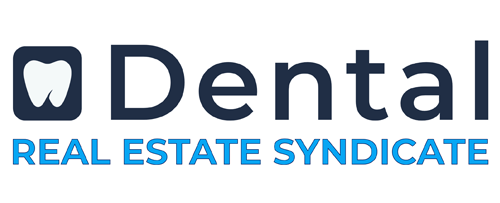In the world of dental real estate, Dental Sale Leaseback is an attractive option for practice owners looking to free up capital while still retaining ownership of their operational space. Whether you’re looking to invest in expanding your dental practice or need immediate funds for other business ventures, a sale-leaseback arrangement could be the perfect solution.
What is a Dental Sale Leaseback?
A Dental Sale Leaseback involves the sale of your dental office property to an investor, followed by the leasing of the same property back to you. This arrangement allows you to continue operating your practice without disruption while turning your property into liquid capital. The buyer (often an investor or a real estate firm) becomes the property owner, and you, the seller, become a tenant under a lease agreement. The leaseback terms typically include monthly rental payments, which can be adjusted to your business’s cash flow needs.
Benefits of Dental Sale Leaseback
The sale-leaseback arrangement offers several key benefits for dental practice owners:
1. Immediate Capital Release
By selling your practice property, you unlock its value in cash, which you can reinvest in your practice, pay down debt, or fund other business opportunities. This capital infusion can provide a significant boost to your practice’s financial position.
2. Continue Operating Your Practice
Even though you sell the property, you retain the use of the space under a lease agreement. This means your dental practice can continue operating as usual, without the disruption of moving to a new location.
3. Flexibility in Lease Terms
Leaseback arrangements are often customizable to suit your specific needs. You can negotiate terms such as rent payments, lease duration, and renewal options, making it easier to align the deal with your practice’s financial goals.
4. Potential for Tax Benefits
Sale-leaseback transactions can sometimes offer tax advantages. For example, the lease payments may be considered operating expenses, which could reduce taxable income.
5. Relieve Real Estate Management Responsibility
As the new property owner assumes the responsibility of maintaining and managing the real estate, you can focus solely on running your dental practice rather than dealing with the headaches of property management.
When is a Dental Sale Leaseback a Good Option?
A Dental Sale Leaseback can be an ideal solution in several situations:
1. Need for Immediate Capital
If you require cash quickly for expansion, equipment upgrades, or to pay down debt, a sale-leaseback can provide immediate funds without requiring you to sell your practice or give up your dental space.
2. Desire to Reinvest in Your Practice
A sale-leaseback allows you to tap into the value of your property, freeing up capital to reinvest directly back into your practice, such as upgrading equipment or expanding services.
3. Focus on Running Your Business
If you want to take the burden of real estate management off your plate but still retain the same space for your practice, a sale-leaseback provides the flexibility to do so.
Potential Drawbacks of Dental Sale Leaseback
While a dental sale-leaseback offers many advantages, there are a few potential drawbacks to consider:
1. Ongoing Rent Payments
After the sale, you will need to pay rent to the new property owner, which could affect your cash flow. If your practice’s financial situation changes, rent payments could become a burden.
2. Lease Terms Could Be Restrictive
The terms of the lease agreement are crucial. If the leaseback agreement includes rent increases, a long-term lease, or other restrictions, you may find it difficult to adapt in the future.
3. Loss of Property Ownership
Once the sale is completed, you no longer own the property. If the real estate market improves or the property value increases, you miss out on future appreciation.
4. Risk of Not Renewing the Lease
Some sale-leaseback arrangements may not guarantee lease renewal after the term ends. You must be prepared for the possibility that the investor may not be willing to renew or could impose unfavorable lease terms.
How to Structure a Dental Sale Leaseback Agreement
When considering a dental sale-leaseback, it’s important to work with professionals who can help structure the deal effectively. Here are key components to include in the agreement:
1. Sale Price
The sale price should reflect the fair market value of the property based on comparable real estate sales, the location, and condition of the property.
2. Lease Terms
You’ll need to negotiate lease terms that suit your practice’s needs. Key factors include the length of the lease, rent payment structure, annual rent escalations, and renewal options.
3. Maintenance and Repairs
Clearly outline who will be responsible for property maintenance and repairs—whether it’s the new owner or the dental practice tenant.
4. Exit Strategy
Discuss an exit strategy in the event that your practice wants to move to a new location or terminate the lease. Include terms for lease termination or subletting if needed.
Why Work with Dental Real Estate Experts for Dental Sale Leaseback?
At Dental Real Estate Syndicate, we specialize in guiding dental professionals through complex real estate transactions, including dental sale leasebacks. Our team is equipped with the knowledge and experience needed to ensure that the transaction goes smoothly and that you achieve the best possible outcome.
Whether you are looking to sell your practice’s property for immediate capital or are considering the long-term implications of leasing back your space, we offer expert advice and personalized solutions tailored to your needs. Learn more about our team and services on our About page.
Connect with Us regarding Dental Sale Leaseback
If you are considering a dental sale-leaseback, we are here to help. Dental Real Estate Syndicate offers nationwide services to help dental practice owners navigate the real estate landscape. Reach out to us today to discuss your options and start making decisions that will help you grow and secure your practice’s future.
For more information or to schedule a consultation, visit our website, or connect with us on LinkedIn.

